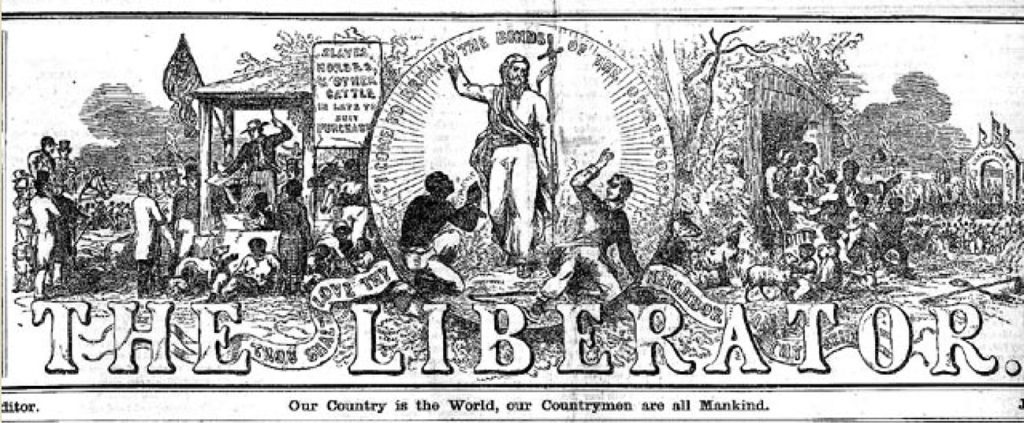13. Antebellum Idealism and Reform Impulses, 1820–1860: Introduction

This masthead for the abolitionist newspaper The Liberator shows two Americas (Figure 13.1). On the left is the southern version where enslaved people are being sold; on the right, free Black people enjoy the blessing of liberty. Reflecting the role of evangelical Protestantism in reforms such as abolition, the image features Jesus as the central figure. The caption reads, “I come to break the bonds of the oppressor,” and below the masthead, “Our country is the World, our Countrymen are all Mankind.”
The reform efforts of the antebellum years, including abolitionism, aimed to perfect the national destiny and redeem the souls of individual Americans. A great deal of optimism, fueled by evangelical Protestantism revivalism, underwrote the moral crusades of the first half of the nineteenth century. Some reformers targeted what they perceived as the shallow, materialistic, and democratic market culture of the United States and advocated a stronger sense of individualism and self-reliance. Others dreamed of a more equal society and established their own idealistic communities. Still others, who viewed slavery as the most serious flaw in American life, labored to end the institution. Women’s rights, temperance, health reforms, and a host of other efforts also came to the forefront during the heyday of reform in the 1830s and 1840s.

